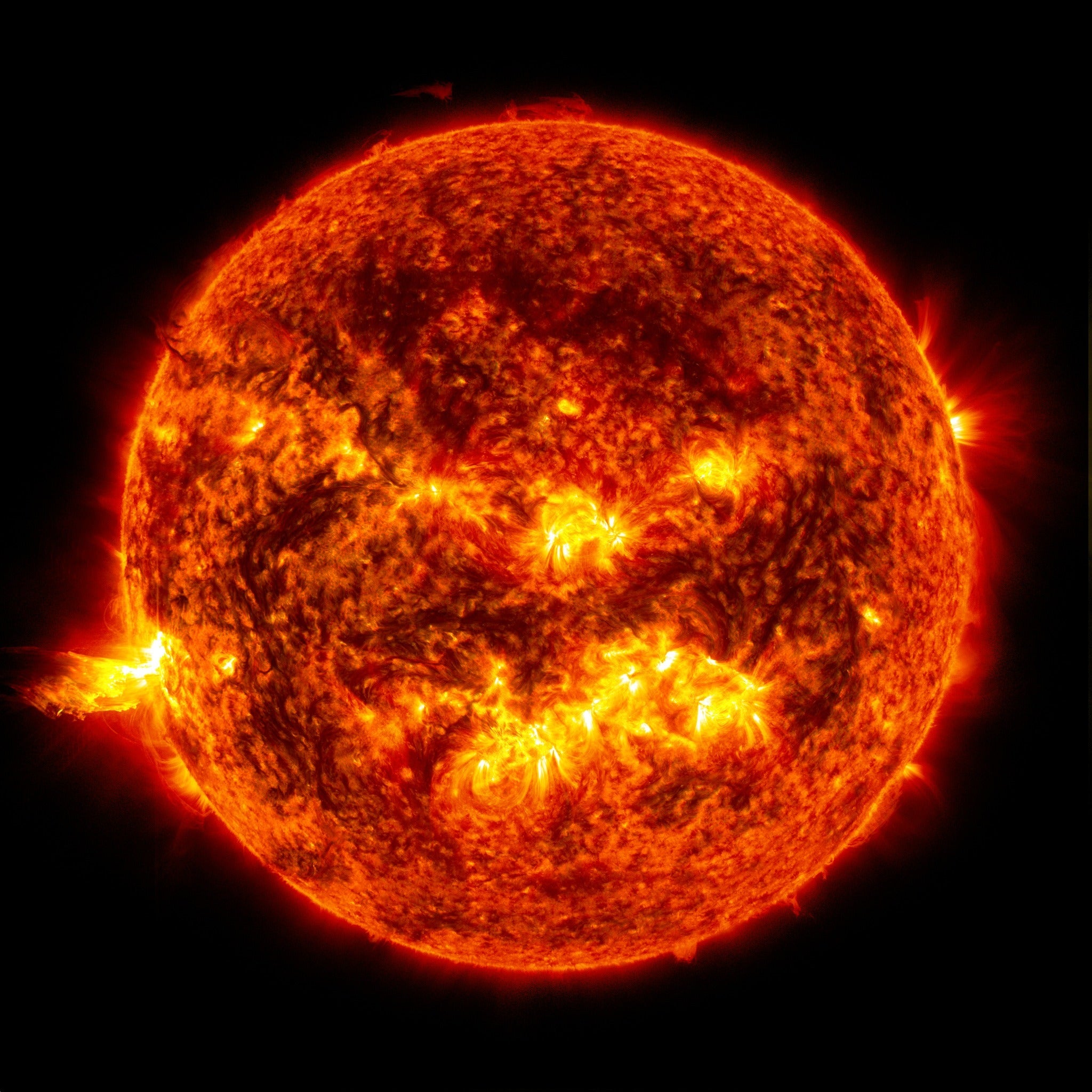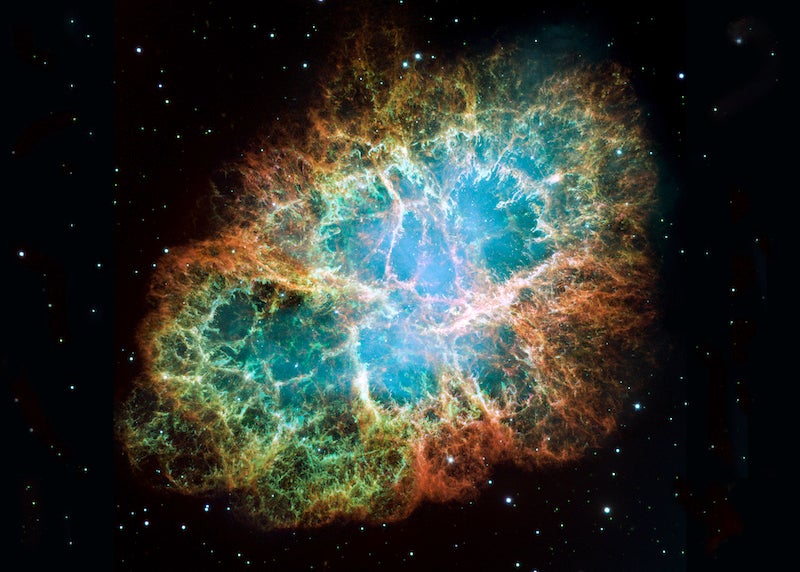Similarly, you might expect that stars’ rotational poles would be aligned with the Milky Way’s spin axis. But the North Galactic Pole is located in Coma Berenices, 70° from the North Ecliptic Pole in Draco. Is the Sun the galaxy’s odd star out, like Uranus and Venus in the solar system? Or do stellar spin axes fail to line up with the galaxy’s rotation?
Stars form in giant molecular clouds — huge conglomerations of cold, dense gas in the Milky Way’s spiral arms. Molecular clouds form and dissipate in less time than it takes them to orbit the galaxy, so they never really “feel” its rotation.
The gas in giant molecular clouds is turbulent, with eddies flowing randomly throughout the cloud. Star formation begins when part of a cloud becomes dense enough that gravity pulls the gas inward. Turbulence gives this collapsing fragment some spin. The cloud’s swirling eddies can move in any direction, so, cloud fragments may spin in any orientation. One molecular cloud can form thousands of stars, each with a random rotation axis.
As the material collapses, the cloud’s rotation becomes more prominent, just as spinning figure skaters speed up by pulling their arms inward. Soon, the gas collapses to form a disk the size of our solar system with a central protostar. Everything will be spinning in the same direction as the turbulent knot from which the system formed. All the gas orbits the central star in the same direction, so anything that forms from it — such as planets — will naturally spin the same way.
In this simple picture, planets should have their spin axes aligned with their parent stars’. And stars, even those forming from the same molecular cloud, should have randomly oriented spin axes. But is this what astronomers see?
In 2001, Helmut Abt of Arizona’s Kitt Peak National Observatory published a study of spotted stars. The spots are much larger than sunspots, so we can actually see the amount of starlight change as spots rotate into and out of view. Abt used this information to determine the angle of the stars’ rotational axis with respect to the Sun. The spin axes are completely random, thanks to small amounts of turbulence in a long-vanished cloud.
— KURTIS WILLIAMS, STEWARD OBSERVATORY, TUCSON, ARIZONA










